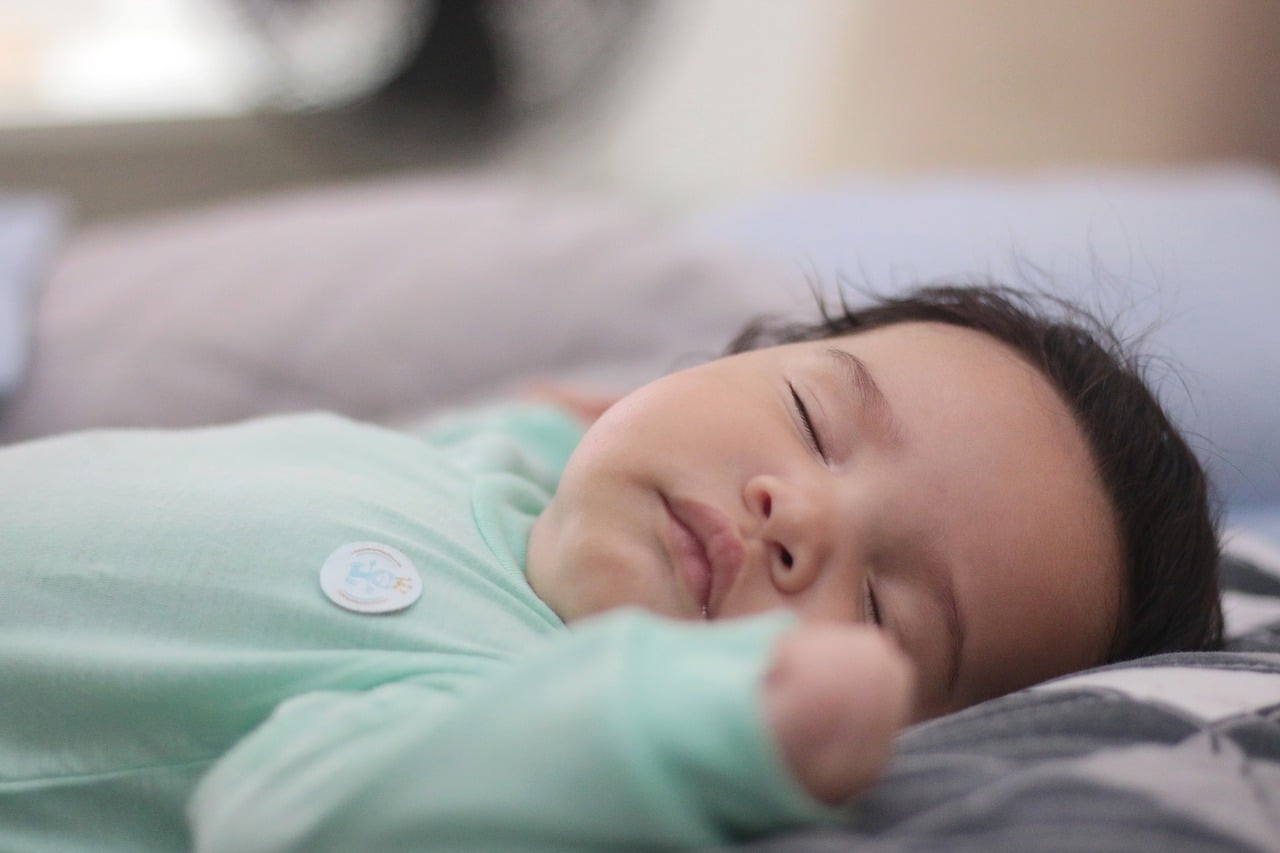Many parents are curious about when do babies drop to one nap a day. This is a common developmental milestone that usually occurs between 14 to 18 months old. Some babies may start dropping to one nap earlier, while others may take a little longer. As long as your baby is generally happy and thriving, there is no need to worry if they are still taking two naps at this stage.
Though the daytime sleep requirement gradually decreases as a baby gets older. Most toddlers still need around 12 to 14 hours of sleep in a 24-hour period. This usually includes one nap in the morning and once at night. Some babies may be ready to transition to just one nap sooner or later depending on their individual needs.
If your toddler is resisting their afternoon nap or taking a shorter morning nap, this may be a sign that they are ready to start dropping to one nap. However, it’s important to make sure that your baby is getting enough sleep at night before making any changes to their daytime routine. Generally, the second nap can be eliminated when your toddler is getting at least 11 hours of sleep in a 24-hour period. In this blog post, we will discuss how to make the transition from two naps to one nap a day.
In This Article
When do babies drop to one nap schedule?
As we said above the babies will begin to move toward one nap between 14 and 18 months old. The process can take a few months, and some babies may experience a bit of regression during the nap transition. Most babies will be down to one nap by about 10-14 months old. Some 2-year-olds still need two naps, but this is relatively rare.
Additionally, your baby normal nap time will gradually move later and later. When your baby falls asleep by themself for the nap, it will be an indication that they are ready to drop to one nap schedule. The nap regression that can sometimes occur during the dropping-to-one-nap transition is usually just a phase, and your baby will soon be happily taking one nap per day.
However, morning or afternoon nap transition may be tough for some babies. A good way to ease into the new sleep schedule is by slowly cutting back on the length of your baby’s second nap. You may also want to consider making some changes to your baby’s bedtime routine. For example, you can try adding an additional 15 minutes to their nighttime sleep.
Babies transition from two naps to one is a process that takes several months. During this time, your baby’s daytime sleep patterns will change and they may even seem cranky or fussy. As a parent, it’s important to be patient and understanding during this process. Remember, all babies are different and will make the transition at their own pace. If you have any concerns about your baby’s sleep habits, be sure to speak with your baby sleep consultant. They can offer guidance and support throughout the process.
What are the signs that a baby is want to go to one nap?
Babies falling asleep earlier in the evening and becoming less interested in their morning nap are often the first signs that they’re ready to transition to one nap. Similarly, there are many common signs that a baby is ready to drop down to one nap. If your baby has been consistently taking two naps for at least four to six weeks and is doing well with that routine, you can start slowly transitioning them to one nap. Below we have outlined the indicators that show when a baby is ready to transition and they are:
1 Skipped naps:
If your baby is skipping their morning nap or lunch nap, this is usually a sign they are ready to transition to one nap. Many toddlers will only need one nap during the day and can make the transition without much trouble. When your child fall asleep earlier in the evening, they are most likely ready for one nap. As well as slightly earlier bedtime your baby might be waking early is also an indicator that your baby is ready for just one nap. Moreover, baby nap resistance makes them cranky and can disrupt the family routine, so it is important to make the switch when your baby is developmentally ready.
2 Awake windows:
The awake window is the amount of time that a baby is awake between naps or sleep periods. As babies get older, they have a smaller wake window and can stay awake for longer periods of time. If your baby is consistently staying awake for more than an hour and a half, it usually means they are ready to transition to one nap. The morning nap time will be the first to go, and you can expect your baby to take their one nap sometime in the afternoon. In such time early wake-ups and catnaps might happen, but it is only a phase. When your baby completes one sleep cycle is essential for you to determine when their nap should end. Thus, watch your baby for clues that they’re getting tired and put them down before they get too much overtiredness.
3 Length of nap:
The length of a baby’s nap can also be an indicator that they are ready for one nap. A baby who is taking a one-hour nap is usually ready to transition to one nap. As babies get older, the night sleep becomes longer and the morning nap shorter. In a few weeks after the transition, your baby will be taking one long nap that replaces both the morning and lunch naps. Moreover, nap transitions are tricky but as long as you follow your baby cues, it will be smooth sailing.
4 Trouble with nighttime sleep periods:
If your baby is having trouble sleeping at night, it might be because they are overtired from not getting enough daytime naps. When a baby starts taking one nap, nighttime sleep usually becomes more restful. If your child is having trouble sleeping through the night, try to stick to their current bedtime and see if nap time transitions help improve nighttime sleep. A child’s sleep patterns usually even out in a few weeks after dropping to one nap. Generally, night wakings are caused by overtiredness and not being able to get the right type or amount of daytime naps.
5 Eating habits:
A baby who is eating well and gaining weight is usually a good indicator that they are ready to transition to one nap. If your baby is not eating as much during the day, it might be because they are taking too many naps and need to cut down to one. As your baby starts eating more solid foods, they might need less frequent naps. If you are noticing that your baby is not as interested in their morning or afternoon bottles, this is usually a sign that they are ready to transition to one nap. As a parent, it’s important to decide how much sleep your baby needs. You might need to experiment with different nap times and lengths to find what works best for your child.
6 Consistent energy:
A baby who is consistently energetic during the day and has good energy is usually ready to make the switch to one nap. Most babies will have some fussy moments as they adjust, but if your child is happy and content most of the day, they are likely ready to make the transition. If your baby is taking two naps but still seems cranky or fussy in the evening, you might want to wait a bit longer before making the switch. If an occasional two-nap day works better for your baby’s schedule, then by all means go with that.
7 Disruptions in sleep:
If you are noticing that your baby’s sleep is being disrupted by teething, growth spurts, or illness, it might be a good time to transition to one nap. To drop naps successfully, your baby needs to be sleeping through the night and taking good, solid naps during the day. If your child is struggling with sleep at night or during the day, it might be best to wait until they’ve gotten their sleep issues sorted out before making the switch to one nap. Nap transition should only be attempted when your baby is healthy and well-rested. So, if you are noticing that your baby is fighting their naps or waking up frequently at night, it might be best to wait a few weeks before attempting the transition.
How to transition to one nap schedule?
Baby nap transitions can be a bit of a roller coaster ride for parents. The key is to keep a close eye on the baby’s sleep patterns and cues. When you see that your baby is ready for one nap, make the transition gradually. There are a few tricks to do this and they help make the process smooth for the baby.
1 Just Do It:
If you’ve been contemplating the switch to one nap, then just do it! If your baby is six months or older and taking two naps per day, chances are they ready for one. Be prepared for a few rough days as babies readjust, but eventually, they’ll get the hang of it. Baby sleep cycles will be more consolidated and they’ll get the important rest they need. If your baby’s second nap is consistently lasting less than an hour, it’s a sign that they are ready to transition to one. Start by moving bedtime up 15-30 minutes and gradually shorten the duration of the second nap.
2 Do a Test Run:
Before you make the switch to one nap, do a test run! For a few days, put the baby down for their first nap earlier than usual. This will help you see if the baby can make it through the day on just one nap. If they seem extra fussy or have difficulty making it to bedtime, then it’s clear they’re not quite ready for the switch. Try again in a few weeks when the baby is a bit older.
3 Split the Day in Half:
Another way to ease your baby into a one-nap schedule is to split the day in half. On days when the baby takes their first nap early, have them skip their second nap. This will help them get used to going without a nap for part of the day. Then on days when the baby takes their nap later, let them have their second nap. This method is a bit more disruptive, but it can help the baby adjust to the change gradually.
4 Start with an Early Nap:
If you want to start your baby on a one-nap time gradually, start by putting them down for their nap earlier than usual. This will help them get used to the idea of taking just one nap. Gradually move their nap time earlier each day until they’re taking it at the usual time. This method is a bit slower, but it’s less disruptive for the baby. However, early bedtime slightly might make for some cranky evenings. As well as nap time, you may also need to adjust feeding times. Sometimes early bedtime means the baby isn’t getting enough food during the day. If this is the case, try moving up mealtimes so the baby is well-fed before their nap.
5 Follow Baby’s Cues:
The most important thing to remember when transitioning a baby to one nap is to follow their cues. If the baby is fussing and rubbing their eyes, they’re telling you they’re ready for a break. Resist the urge to force them to keep taking two naps. It’s more important that the baby gets the rest they need, even if it means going through a few rough days. When your baby drops to one nap make sure that their nap time is not too close to bedtime so that they can still get a good night’s sleep. Moreover, make sure you have a solid plan in place to keep babies occupied during the hours they would normally be napping. This can include plenty of tummy time, playtime with mom or dad, and plenty of stimulating toys and books.
6 Use a Swaddle:
If your baby is resistant to the change, try using a swaddle. The tight embrace of the swaddle will help babies feel secure and comfortable as they adjust to the new sleep schedule. Be sure to only use the swaddle during naptime so the baby associates it with sleep. During their normal nap time, put a baby in the swaddle and rock them until they fall asleep. Once they are asleep, gently lay them down in their crib or bassinet. This will help the baby sleep through the night and take long naps during the day. Furthermore, the baby’s sleep time routine with swaddle will be a cue for their brain that it’s time to sleep.
The Bottom line
Most babies start to drop down to one nap sometime between 14 to 18 months old. This is typically when babies are developmentally ready for the change and it usually coincides with them becoming more mobile. Around this time, most babies will also be able to stay awake a little bit longer in between naps so they won’t need quite as long of a sleep session during the day.
If your baby is still taking two naps at this stage, you may want to begin slowly transitioning them over to one nap by shortening their first nap and/or lengthening their second nap. Some babies may take a few weeks or even a month or two to fully make the switch, while others may make the adjustment more quickly. Well, we hope this article helped you to understand a bit more about baby sleep and when do babies drop to one nap. If you have any specific questions or concerns, please feel free to reach out to us directly through the comments below.
Additional Questions (FAQS):
QUES: 1 Is it normal for a 1-year-old to sleep all day?
ANS: No, it is not normal for a 1-year-old to sleep all day. A 1-year-old should be up and active, exploring their surroundings and learning new things. If your child is sleeping all day, it could be a sign that they are not getting enough stimulation or that they are uncomfortable or bored. Try to find out the root of the problem and make changes so that your child can get more activity and stimulation during the day.
There are many possible causes of excessive daytime sleepiness in toddlers, such as inadequate nighttime sleep, an underlying medical condition (e.g., apnea), or ingestion of too much caffeine or sugar. Make sure the morning nap and afternoon nap last about two hours each and provide enough time for the baby to get a good night’s sleep.
QUES: 2 Is it right to push bedtime earlier for my toddler?
ANS: It is typically recommended to push bedtime earlier for toddlers, as research shows that adequate sleep is crucial for healthy development.
The National Sleep Foundation recommends that toddlers get between 11 and 14 hours of sleep per day. However, most toddlers only get 10-13 hours of sleep per day. This lack of sleep can lead to problems such as difficulty paying attention, problems with emotional regulation, and decreased cognitive performance.
So while it’s not always easy to get your toddler to go to bed earlier, it’s important to try to make sure they’re getting enough sleep.
QUES:3 What should do when my baby wake early?
ANS: If your baby wakes up early, there are a few things you can do to help them go back to sleep. Some babies may need to be soothed back to sleep with a pacifier or by being rocked, while others may just need to feel snug and secure in their crib. You could also try putting them in a dark room and lowering the volume of the noise in your home.
Whatever you do, don’t try to force your baby to stay awake if they’re not ready for breakfast yet. It’s more important that they get enough rest so that they can continue developing properly. Hopefully, by following these tips, you’ll be able to get your little one back on track for a good night’s sleep.
QUES: 4 Is three half an hour morning nap is too much?
ANS: No, three half-hour morning naps are not too much. In fact, they can be just the right amount of napping for some people. Morning naps can help you feel rested and refreshed, and can also boost your energy levels for the rest of the day. It has been shown that three half-hour naps are optimal for mental and physical performance.
This is because the body’s natural sleep cycle is around 90 minutes long, so three half-hour naps allow your baby to get a full cycle of sleep. Furthermore, research has shown that naps of this length improve memory and cognitive function. If your baby falls asleep during the day, try to let them sleep for at least 30 minutes. The nap transitions from light sleep to deep sleep, and this is the most beneficial stage of sleep for babies.











